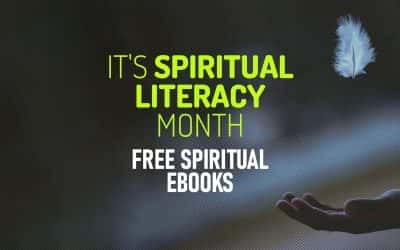Last week, the world celebrated Scotch Whisky Day on the 27th of July. A week too late, but considering that the consumption of such beverage occurs on a daily basis, it’s safe to assume that everyday is Scotch Whisky Day. Whisky or whiskey is a type of distilled alcoholic beverage made from fermented grain mash. Various grains (which may be malted) are used for different varieties, including barley, corn, rye, and wheat. Whisky is typically aged in wooden casks, generally made of charred white oak. Whisky is a strictly regulated spirit worldwide with many classes and types. The typical unifying characteristics of the different classes and types are the fermentation of grains, distillation, and aging in wooden barrels.
The word whisky (or whiskey) is an anglicisation of the Classical Gaelic word uisce (or uisge) meaning ‘water’ (now written as uisce in Modern Irish, and uisge in Scottish Gaelic). Distilled alcohol was known in Latin as aqua vitae (‘water of life’).
It is possible that distillation was practised by the Babylonians in Mesopotamia in the 2nd millennium BC, with perfumes and aromatics being distilled, but this is subject to uncertain and disputed interpretations of evidence. The earliest certain chemical distillations were by Greeks in Alexandria in the 1st century AD, but these were not distillations of alcohol. The medieval Arabs adopted the distillation technique of the Alexandrian Greeks, and written records in Arabic begin in the 9th century, but again these were not distillations of alcohol. Distilling technology passed from the medieval Arabs to the medieval Latins, with the earliest records in Latin in the early 12th century.
In this compilation, you’ll find 13 free downloadable ebooks covering various aspects of this beverage, from history, methods, recipes and many more. Most of them are in PDF formats and a couple of them are in German.
The Art of Making Whisky
By Anthony Boucherie
The most usual drink in the United States, is whiskey; other spirituous liquors, such as peach and apple brandy, are only secondary, and from their high price and their scarcity, they are not sufficient for the wants of an already immense and increasing population. As to wine, in spite of all the efforts and repeated trials made to propagate the grape-vine, there is as yet no hopes, that it may in time become the principal drink of the Americans.
The arts and sciences have made great progress; my aim is to diffuse new light on every thing that relates to the formation of spirituous liquors that may be obtained from grains. Most arts and trades are practised without principles, perhaps from the want of the means of information. For the advantage of the distillers of whiskey, I will collect and offer them the means of obtaining from a given quantity of grain, the greatest possible quantity of spirit, purer and cheaper than by the usual methods. I shall then proceed to indicate the methods of converting whiskey into gin, according to the process of the Holland Distillers, without heightening its price.
The Craft of Whisky Distilling
The American Distilling Institute (ADI)
Whether you’re looking to open up a distillery, want to make your own moonshine whiskey down in the hollar, or simply like reading up on the topic of alcoholic beverages, you’re going to want to know about this awesome free eBook we’ve uncovered.
Back in 2009 The American Distilling Institute put together an awesome free eBook titled The Craft of Whiskey Distilling, which (spoiler alert) is an awesome little starter guide on the topic of distilling. It covers everything from mashing to distilling principles, to distillery start up costs (complete with examples).
Scotch Whisky – All About Uisge Beatha
Whic.de
350 pages, 104 distilleries, hundreds of tasting notes and many pictures – this is how the free eBook ‘Scotch Whisky – all about Uisge Beatha’ can be summed up aptly. The publisher is the online whisky retailer whic.de, which has already published numerous eBooks on the subject for free. However, these always referred to the individual whisky regions of Scotland, such as Islay, Speyside, Highlands, Lowlands and so on. This eBook is now, so to speak, a summary of the previous ones and covers all whisky regions in Scotland.
After the introduction to the history, production and peculiarity of Scotch whisky, the book introduces 104 distilleries – both known and lesser-known – in detail. To this end, the authors have written down tasting notes on selected bottling of each distillery. Last but not least, the detailed work scores with numerous great photos of distilleries, whisky bottles and the picturesque landscape of Scotland. After reading it, you may rightly feel like a small whisky expert.

The Flavour of Whisky
David Wishart
Lagavulin, Talisker, Ardbeg—the names roll off the tongue and the liquid slides gloriously down the throat. Single malt Scotch whiskies count among the pleasures of life. But how can you classify their complex and various flavours? David Wishart savours a smoky, medicinal, peat-filled Islay and comes up with a scheme.
The essential ingredients for making fine malt whisky—barley, peat and a copious supply of fresh, clean water—were all abundant at Glenlivet. The fertile valley of the river Spey below provided good barley; the hills above were layered with peat, an unlimited supply of free fuel, and the water that flows from the peak of Ben Rinnes down the river Livet is ideal for making whisky—cold, soft, pure melted snow.
The Cask Trade Guide to Scotch Whisky
Cask Trade
The Scotch Whisky Industry contributes close to five billion pounds to the UK economy, earning £140 in exports every second, and is continuing to grow. In February 2019, rare whisky topped the Frank Knight luxury investment index beating coins, classic cars and fine wine. Find out all you need to know about Scotch Whisky and Casks in this guide.
The origins of the whisky phenomenon are not clear. Nobody knows who invented Whisky, or for that matter when it was invented. What we do know is that distillation arrived in Ireland and subsequently Scotland during the late middle ages, and was most likely brought by monks travelling back from the continent. Italian records from the 13th century tell us that aqua vitae was produced by monasteries for medicinal purposes, rather than for social consumption.
Whisky Chemistry – A Whisky Tour
Chemistry World
Is this the most chemically complicated drink in the world? Victoria Gill attempts to unlock some of the mysteries of Scotch malt whisky.
When I worked in a tiny Edinburgh pub, I occasionally incurred the wrath of the regulars when the water jug sat on the bar wasn’t at room temperature by the time they wanted their whisky. So I’ve long been eager to find out if there’s any chemical truth behind this received bar wisdom, and similar whisky lore.
I’ve heard much postulating about ‘releasing the flavours’, so during my visit to Edinburgh’s Scotch Whisky Research Institute (SWRI), I hoped the real experts might teach me how to make it – or fake it – as a whisky connoisseur, so that I could smugly explain to my friends in the pub exactly how one should dilute one’s whisky – and more importantly, why.
The Impact of Whisky Blend Matrices on the Sensory Perception of Peaty Flavours
Tao Yang
The success of Scotch whisky in the global drinks market is well-known. One of the reasons for this is its unique sensory properties (Lyons 1999). The majority of Scotch whiskies are produced and sold as blended whisky (a blend of different types of whiskies). Thus blended whisky is one of the most popular spirits in the world. The creation of Scotch blends is regarded as an art and every Scotch whisky Company has its own proprietary recipes, particularly for some of the more established brands.
Scotch Whisky Tasting Toolkit
Scotch Whisky UK
There are many ways to enjoy Scotch Whisky – from a traditional tasting, to food pairings and as the base of world-class cocktails. Tasting whiskies of different ages, from different regions, matured in different casks and in new and different ways is all part of the fun of discovering Scotch – the world’s premier whisky and consumers’spirit of choice. In this toolkit, we will help you to conduct a Scotch Whisky tasting and introduce you to new ways to enjoy Scotland’s national drink.
To truly appreciate Scotch, it helps to have an understanding of the heritage that is captured in every dram. Scotch Whisky is a global industry today, but it has grown from humble beginnings and developed over five centuries. Take a closer look at the history of Scotch Whisky and a few other key facts to boost your understanding and enjoyment.
The Land of Whisky – A Visitor Guide to One of Scotland’s Five Whisky Regions
Visit Scotland
The practice of distilling whisky has been lovingly perfected throughout Scotland for centuries and began as a way of turning rain-soaked barley into a drinkable spirit, using the fresh water from Scotland’s crystal-clear springs, streams and burns.
To this day, distilleries across the country continue the tradition of using pure spring water from the same sources that have been used for centuries. From the source of the water and the shape of the still to the wood of the cask used to mature the spirit, there are many factors that make Scotch whisky so wonderfully different and varied from distillery to distillery.
Whisky Bible – Fourth Edition
The Bulls Head
At one time, all whisky was spelled without the ‘e’, as ‘whisky’. In around 1870, the reputation of Scottish whisky was very poor as Scottish distilleries flooded the market with cheaper spirits produced using the Coffey still. The Irish and American distilleries adopted the spelling ‘whiskey’, with the extra ‘e’, to distinguish their higher quality product.
Today, the spelling whisky (plural whiskies) is generally used for whiskies distilled in Scotland, Wales, Canada and Japan, while whiskey is used for the spirits distilled in Ireland and America. Even though a 1968 directive of the Bureau of Alcohol, Tobacco and Firearms specifies ‘whisky’ as the official U.S. spelling, it allows labeling as ‘whiskey’ in deference to tradition and most U.S. producers still use the historical spelling. Exceptions such as Early Times, Maker’s Mark and George Dickel are usually indicative of a Scottish heritage.
The Electronic Whisky Book v5
Whisky.de
Whisky is one of the most varied spirits in the world. The ‘water of life’ therefore has so many fans and connoisseurs worldwide, who, for example, appreciate a good single malt above all else. For all whisky lovers and those who want to become one, ‘The Electronic Whisky Book’ by whisky.de is a good place to be. On almost 300 pages, Theresia and Horst Lüning give deep insights into the production of the Scottish national drink, explain what it is about smoky whiskies or sherry finishes, which is the right whisky glass or how the high price of some bottling comes about.
Because the authors can report from their wealth of experience as connoisseurs and whisky dealers, this free eBook is particularly worth reading. Here you can also learn a lot from the ‘sewing box’, which is not written in many other whisky books.
The Highland Herald Whisky Magazine
Highland Herold
The Highland Herald whisky magazine is published four times a year and deals with current industry issues, but also timeless foundations – such as whisky production, the work of independent bottlers and other aspects. So it’s not an eBook, but every issue is always available as a free PDF.
The download of the individual editions works without registering or registering for the newsletter. The print edition is available for 2.90 euros per copy from the publisher’s website. The well-known authors from the scene, the professional layout and the exciting mix of topics make the German-language magazine a great read for all whisky friends – and for free.
Gin Book
Ginobility
Gin is the trend spirit of the hour. More and more and more new distilleries, brands and bottlings can be found even in the liquor shelves of ordinary supermarkets. With 102 pages in landscape format you will learn the basics about the history, production, speciality and classification of the different gin varieties such as London Dry, New Western or Old Tom.
The majority of the book, however, consists of recipes for gin cocktails – hung up with nice photos of the respective drinks. There are some more detailed explanations for important compositions such as martini or gin and tonic. The PDF is 4.7 megabytes in size and easily lands on your hard drive with a quick click on the download link.
Interested in videos created exclusively for bookworms?
Watch videos about books, reading and writing. Expect weird, amazing, never known before facts and many more.















